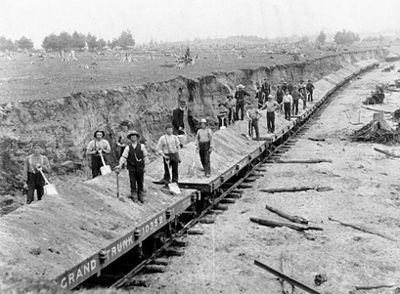In commerce, commodities are interchangeable goods or services. Many natural resources in Canada are viewed as commodities. They are a major source of the country’s wealth. Examples of commodities include a barrel of crude oil, an ounce of gold, or a contract to clear snow during the winter. Commodity products often supply the production of other goods or services. Many are widely traded in futures exchanges (see Commodity Trading).

From its colonial origins in the fur trade, Canada’s economy has depended on commodities. The traditional view of Canadians as “hewers of wood and drawers of water” remains relevant, even though this profile has greatly changed with the growth of manufacturing and information technology. ( See also Staple Thesis.)
For example, in 2019, Canada exported $114 billion worth of energy products. It also exported significant amounts of food, wood products and minerals. The Canadian stock market, for its part, remains heavily based on commodities. Broad Canadian stock-market index funds and exchange traded funds (ETFs) therefore appeal to many international investors looking to invest in commodities. Index funds and ETFs allow investors to diversify (spread out) their investment across many commodities.
See also Winnipeg Commodity Exchange.

 Share on Facebook
Share on Facebook Share on X
Share on X Share by Email
Share by Email Share on Google Classroom
Share on Google Classroom





